I played with Ping irons throughout my professional tour career, but I had never actually used one of their G irons. To be honest, they always looked a little shovel-like to me, having been used to much more compact head shapes.
However the G700 iron changed that, as the hollow-headed iron was part of a new revolution across all manufacturers.
Ping has made efforts to increase the looks of their game-improvement irons and their last couple of releases have been a big step in the right direction - they look more and more like a blown-up forged iron.
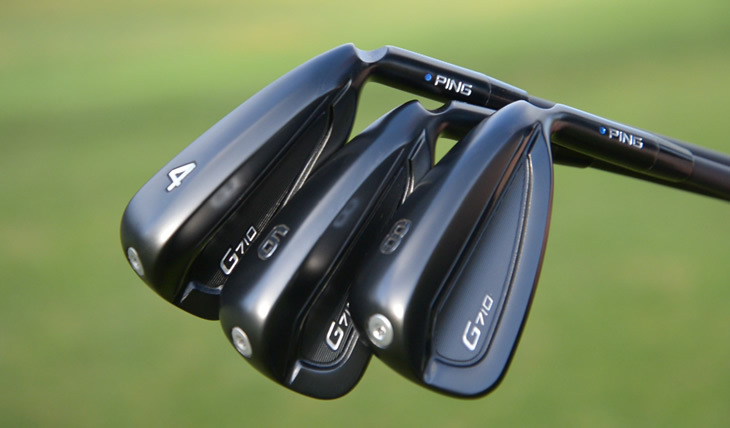
When I first saw the black heads of Ping's new G710 irons, I immediately thought that I'd be much more open-minded about trying them than past G models. I was also glad to see Ping keeping some continuity from the G700 range. It makes more sense for us golfers to 'follow the numbers' and, as you'd expect from Ping, they aren't hyping things up with silly names.
What's It All About?
Whereas 2019's G410 Plus Iron was focused on providing game-improvement whilst having a sleeker profile with less offset, the new G710 is big and friendly, and stated as the longest and most forgiving that Ping has made. Let's talk about why this is...
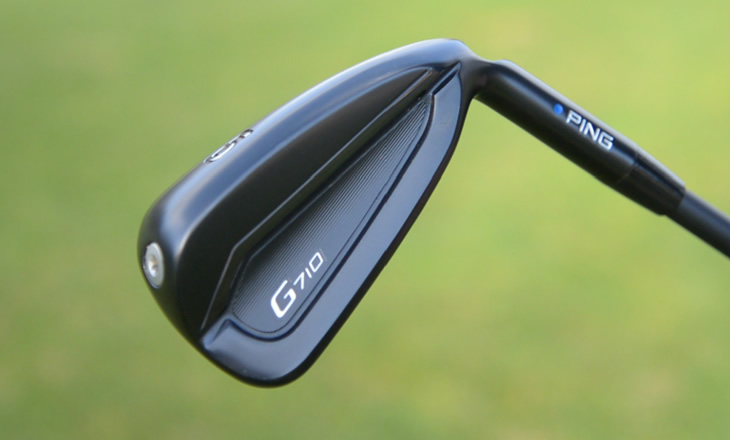
Firstly, extra forgiveness comes thanks to the 17-4 stainless steel body, and high-density tungsten toe and shaft weight, which provides 5% higher MOI than the G700.
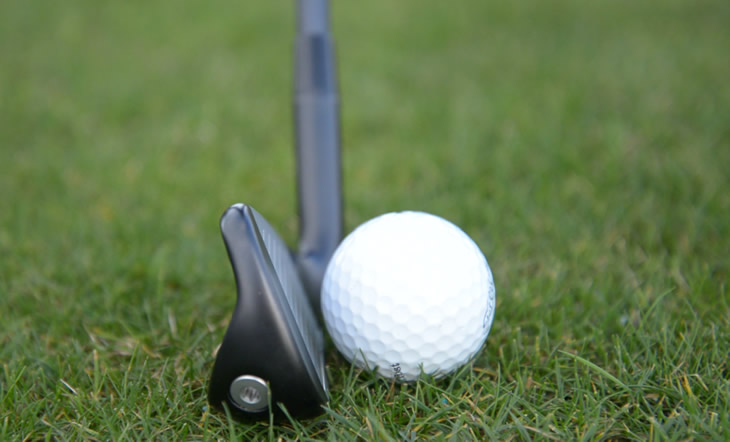
There's a C300 maraging steel face which promotes faster ball speeds thanks to precision machining, acting as a 'spring on a diving board' for higher launch and extra carry distance.
The G710 comes with a stealth hydropearl finish, along with a black PVD coating, which not only looks great but also has some performance benefits too. The coating repels water and works better in wet conditions as it keeps spin rates up, whilst the finish also creates the perception of a smaller head which is more durable too.
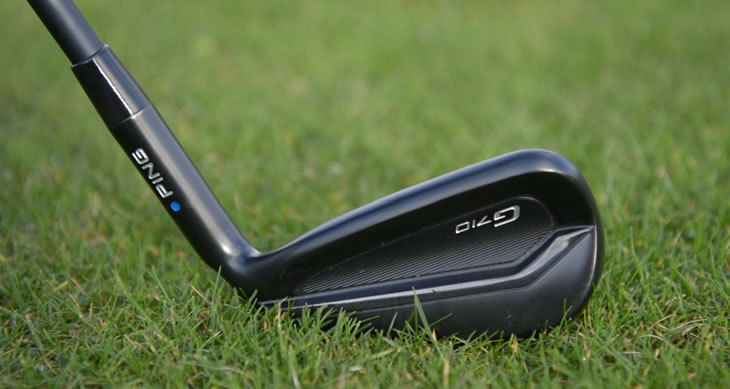
Ping has used modal analysis to work out which sound frequencies are undesirable, and an epoxy has been placed behind the face to dampen the frequencies. They say this results in a more pleasing sound and feel. More on this later...
When purchasing 6 or more irons you also get use of the Arccos Smart Grips, newly included in Ping irons, which are able to track your performance during the round to help you improve your golf by analysing your strengths and weaknesses.
There's an optional Alta Distanza Black graphite shaft, which I tested, that weighs just 42-grams and helps to produce even higher trajectories.

As is customary with Ping, there are both standard and 'power spec' lofts available for those golfers who are seeking a little extra distance along with the forgiveness.

These irons are aimed at mid to high handicappers, who tend to have slightly slower swing speeds and so may be looking for a little extra help with launch and distance without having to use an iron which looks too chunky.
Ping G710 Irons Review
Looks
Ping don't really have a true 'max' iron like the recent Mavrik Max or SIM Max OS, and when I first saw the G710 iron in the flesh I barely believed that they were a game-improvement model!
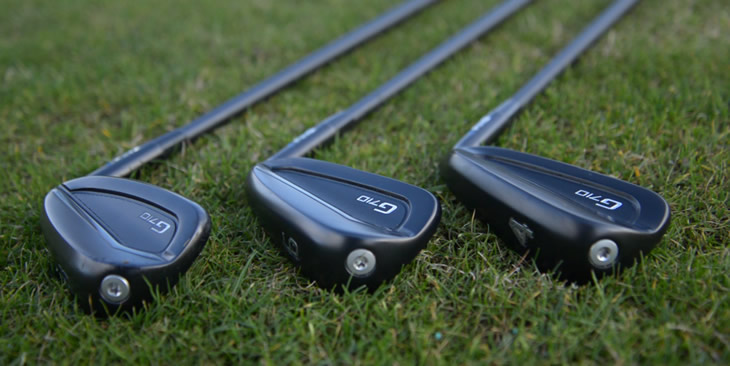
The G710 Iron is sleek, with a surprisingly thin top edge. You can only really see the bulk at the back of the head once you get down to the longer irons (4 and 5).
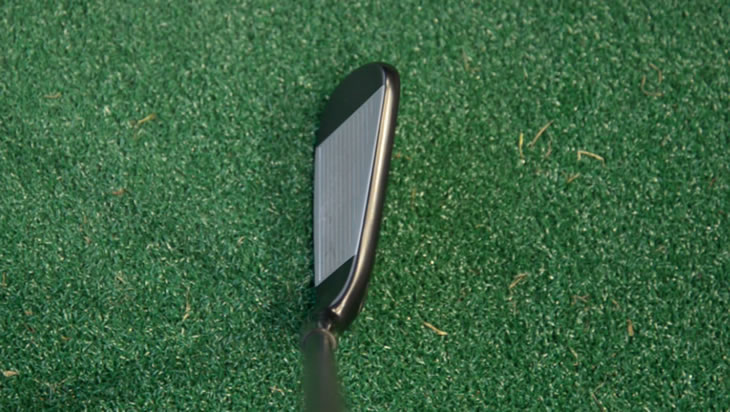
Yes, the head is big and the blade length is long, but the black finish definitely does help with that look. The contrast of the silver face with the black head also provides a better target and look really inviting next to the ball, giving you plenty of confidence when you set up to a shot.
The G700 irons were criticised by some people because they marked up a little too easily. The black head helps with this a little, but after the first couple of shots I could see some blemishes appearing on the face already.
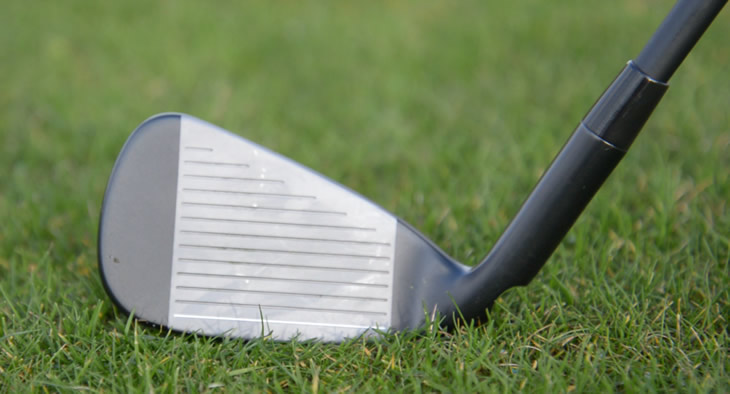
If you're somebody who likes your equipment to look spotless every time you go out on to the course this may be worth bearing in mind.
Feel
When I started hitting balls with the G710 I could instantly feel the ball springing off the club face, almost like a trampoline, but I also noticed the noise straight away - and not in a particularly good way unfortunately.
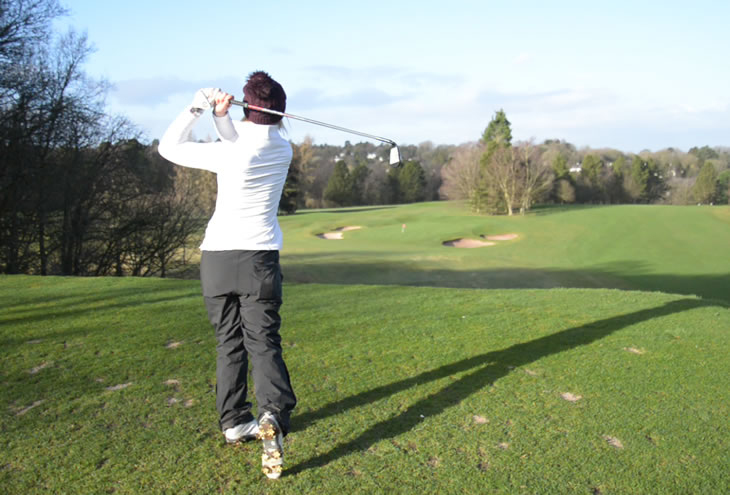
It's a high, 'ting' noise which was notably different to the Callaway Mavrik game-improvement irons, which had that more muffled, 'better-player's' sound. Working on damping and acoustics seems to be the key trick with club releases at the moment but Ping aren't really producing that quiet, soft sound.
Performance
I was testing the G710 irons in standard lofts but after a few hits on the launch monitor I had to double check whether I hadn't been given the power spec by accident!
These irons were definitely long, as the launch monitor at Trafford Golf Centre displayed with an average carry of 161 yards with a 6 iron. This is almost a club longer than my current irons and as impressive as any other game-improvement irons I've tested recently.
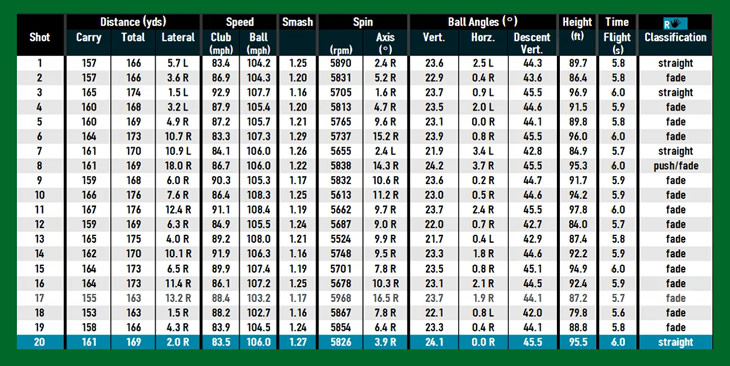
Whilst the Callaway Mavrik may have been a little longer, I suspect that the power spec irons will be more than up to the challenge.
The peak height was just over 30 yards, which is perfect, and I was pleased to see that the spin rate was still up at 5826rpm. This is crucial to stopping the ball on the greens. High and far with an iron is good, low and far is not so good.
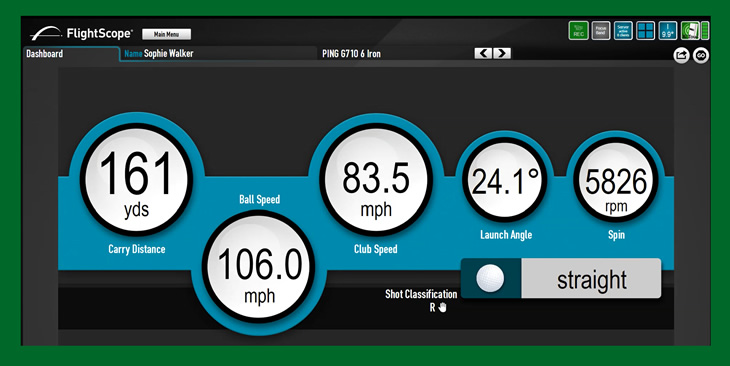
In terms of forgiveness, there was only around 10 yards difference between my shortest and longest carries from the 20 shots I hit with the 6 iron, which I thought was brilliant. Having the confidence that your club is going to perform even when you don't quite hit it as well as you hoped is a great feeling to have.
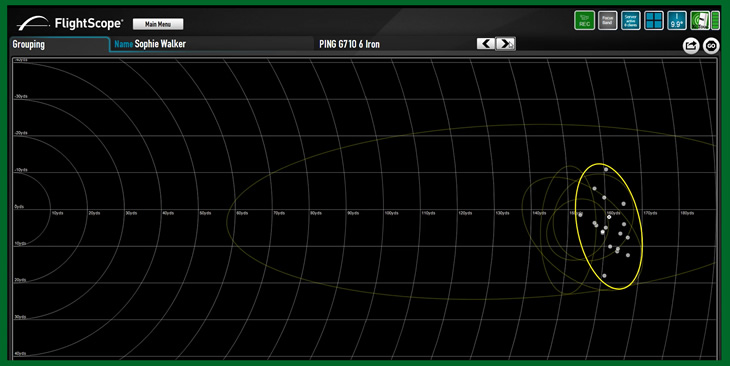
Throughout my testing the dispersion seemed solid enough, there were a few shots missing to the left but this was predominantly due to my own human error, perhaps emphasised by the tungsten toe weight and the slight offset.
Using the lightweight graphite shafts certainly helped the tempo and consistency of my swing, as I gained a few extra miles per hour club head speed compared to usual. At £10 extra per club I'd certainly recommend them if you swing at a similar or slower speed to me.
On The Course
Hitting the 8 iron on the downhill par 3 7th at Prestbury Golf Club, I was pleased to see that the shots I hit all went a consistent distance. The noise from the tee was loud and a little clicky as I usually clip the ball off the top of the tee rather than interacting with the turf.
I was really impressed with the mid-irons out of the rough during testing, as I was able to get through the thicker grass with no distance lost and maintain some control. The noise also seemed to soften a little when hitting from the grass too.

Moving into the longer irons and the G710 starts to look more and more like a Ping G Crossover, although with a little less offset and a thinner topline which is a nice bonus.
Considering that these irons are firmly in the game-improvement market I did initially feel that a 4 iron may be a little redundant for higher handicap golfers, particularly in comparison to hybrids, so I was expecting plenty of launch and forgiveness.
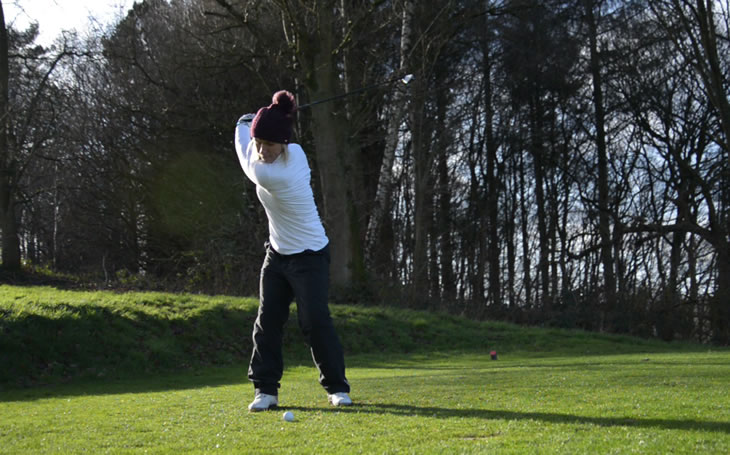
I have to say I wasn't disappointed. After a couple of shots I was hitting high, laser-straight shots straight down the flag and I was really impressed by how it didn't seem to be affected by the wind. Being able to hit a penetrating shot is something which is not always achievable with a hybrid so this was a real positive.
Price
I want to also give a quick mention to the price of these irons too, as Ping appear to have gone down a slightly different route with their structure this time around.
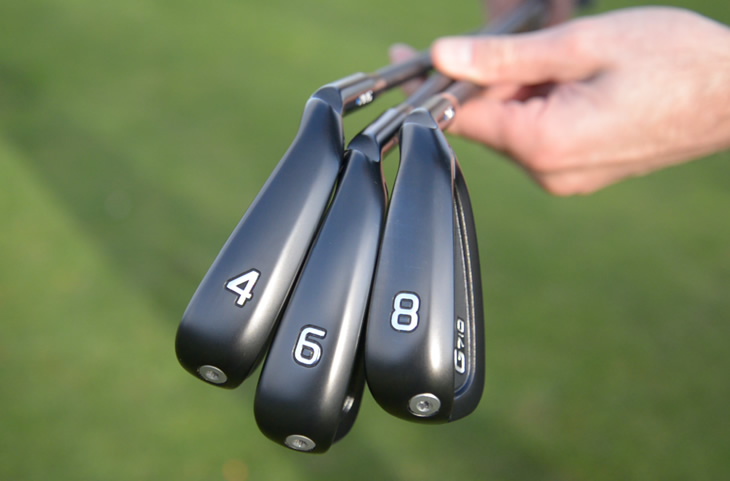
Whilst a set of 7 irons is not cheap, setting you back £1183 for steel shafts, adding graphite shafts (which are usually very expensive) instead is comparatively good value for money, at £1253. For the sake of another £70, if you're looking for additional speed and distance then that lightweight graphite shaft could really make a difference.
It is also always worth considering whether you need to use all seven irons too. For example, my Dad gave up his 4 iron years ago in favour of his hybrid because he finds it much easier to hit. Ping may not thank me for this but you can save
yourself £170 if you think you might be similar.
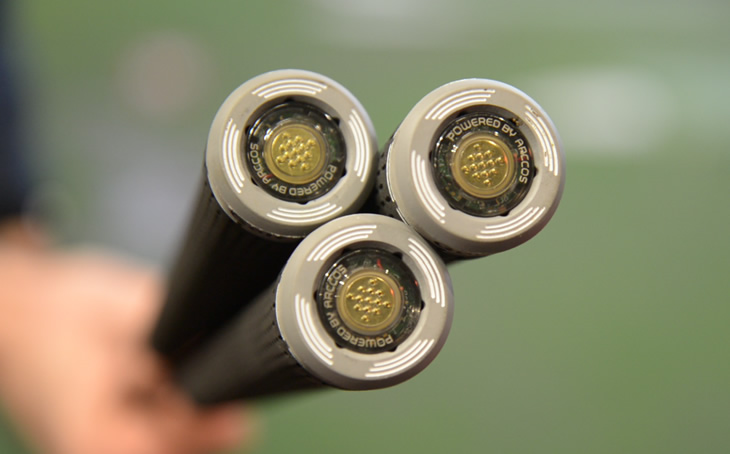
You also get the Arccos grips, worth £199.95, and a 90 day free trial included in the price, which can really help you shave shots off each round if used properly. So at face value, these irons are at the top of the pile when it comes to price for a game-improvement iron, but hopefully this helps to illustrate the reason.
Ping G710 Irons Verdict
The G710 is the best looking true game-improvement iron I have tried. It's long and offers great forgiveness, although does fall down a little on sound and is on the pricey side too.
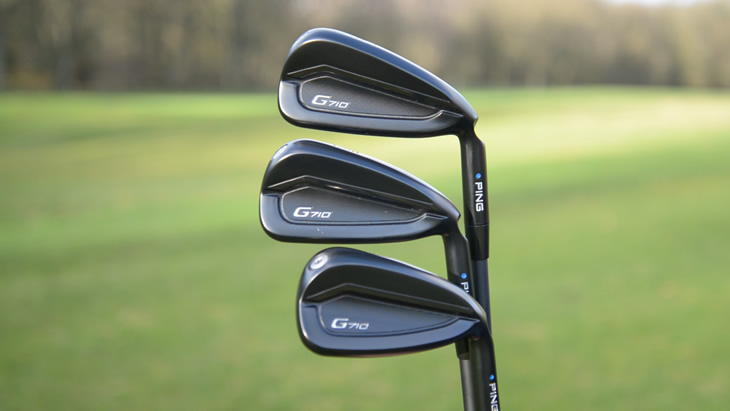
However if you have the money and you aren't particularly bothered about sound, then the positives outweigh the negatives in my opinion.
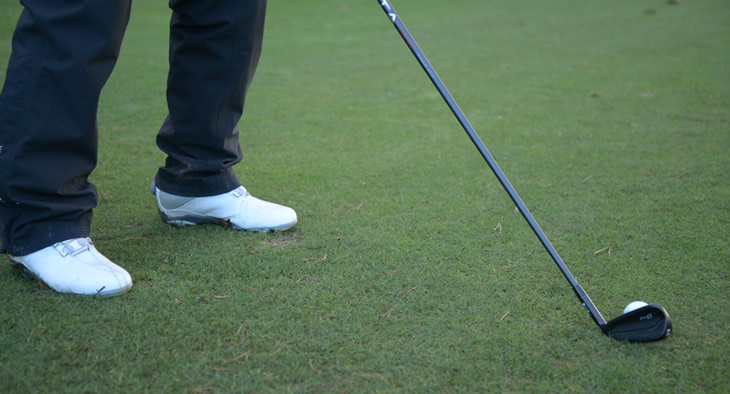
Personally I'd rather focus on the look of an iron as this affects my mentality before the shot, rather than the sound of the iron which comes afterwards.
Would I Use It?
In terms of looks and performance, I think I would. The head is noticeably bigger than my current irons, but as I am playing less these days I'll be happy to get a little more help!

I do have a bit of a problem with the noise, but obviously that comes after the strike anyway so I'd hope to get over that. The price is high, but I'm confident that the majority of golfers will see an actual improvement in results, so you're not just spending money on good looks.
Pros
- Premium looks
- Plenty of forgiveness
- Genuine improvement in distance
- Thin topline
Cons
- Acoustics weren't particularly good
- Price tag may put some golfers off
- Face marks up easily
